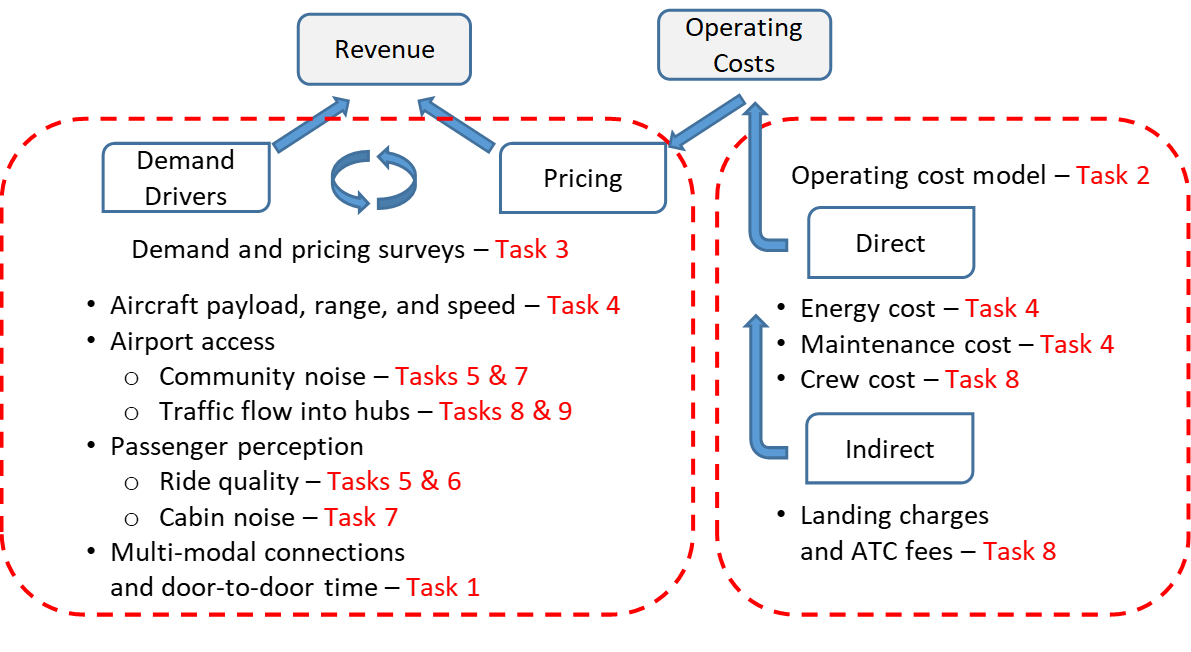Brian J. German — Research
A few examples from recent research projects follow below.
Battery Requirements for Electric VTOL Aircraft for Urban Air Mobility (UAM)
I collaborated with Rob McDonald to investigate the implications of battery specific energy on sizing and range performance of electric VTOL aircraft for Uber's planned Dallas–Fort Worth UAM market. We presented our work at the Uber Elevate Summit in April 2017 in Dallas. Here is a video of our talk:
Cargo Delivery by Passenger-Class Electric VTOL Aircraft
In a NASA-funded study, I collaborated with Matt Daskilewicz and my students Thomas Hamilton and Matthew Warren to assess potential concepts of operations for using battery electric VTOL UAM aircraft, of the type now being considered for passenger service, for cargo delivery. We considered a notional cargo service in the San Francisco Bay Area, in which eVTOL aircraft deliver packages from an Amazon fulfillment center east of the city to a select few urban cargo veritports. We identified promising locations for these vertiports by solving an optimization problem based on demand estimates derived from census data including population and income. Our optimization approach also considered airspace restrictions by constraining vertiports from being placed in surface restriction areas of Class B and Class C airspace. We also modeled aircraft flight energy usage and the corresponding battery recharge time in order to estimate the maximum daily package throughput per aircraft. Initial results of this ongoing work were presented at AIAA SciTech 2018.
 |
Economic Thin Haul Aviation Concepts (ETHACS)
In this NASA NRA project, I am the PI for a multidisciplinary, multi-university team working to develop technologies and concepts of operations for invigorating regional aviation at small airports. We have approached the problem by investigating system solutions that directly map to the profitability of air carriers engaged in thin haul commuter operations. Research topics range from aircraft configuration designs leveraging distributed electric propulsion (DEP), noise modeling of DEP configurations, surveys and focus groups to assess demand, and design of operational procedures for thin haul commuter aircraft. Collaborators on this project include Simon Briceno, John-Paul Clarke, Laurie Garrow, Graeme Kennedy, and Dimitri Mavris at Georgia Tech; Ken Brentner and Amy Pritchett at Penn State; and Jim Gregory at Ohio State.
 |
Propeller Installation Effects on Blown-Wing Performance
My student Xiaofan Fei conducted a comprehensive wind tunnel campaign at Georgia Tech to determine the influence of propeller installation conditions including incidence and vertical offset on low speed lift of a blown wing configuration. Six-axis force and moment data were recorded for both a wing and an upstream tractor propeller over a range of wing angle of attack, flap settings, and propeller rotational speed. The research was sponsored by NASA to support work on the high-lift propeller configuration for the X-57 flight demonstrator and related blown wing configurations.
 |